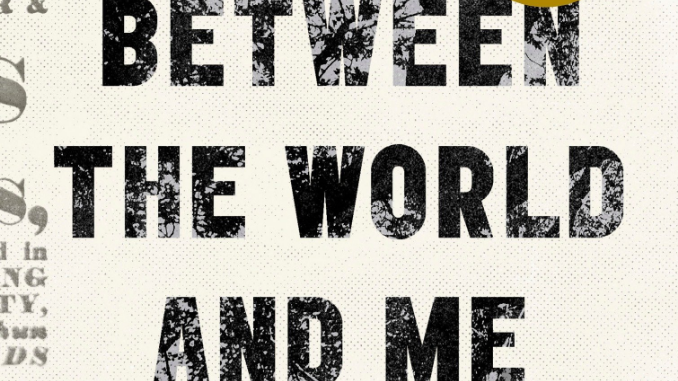
Also by this author: The Water Dancer
Published by Spiegel & Grau on July 14, 2015
Goodreads
For Ta-Nehisi Coates, history has always been personal. At every stage of his life, he's sought in his explorations of history answers to the mysteries that surrounded him -- most urgently, why he, and other black people he knew, seemed to live in fear. What were they afraid of? Coates takes readers along on his journey through America's history of race and its contemporary resonances through a series of awakenings -- moments when he discovered some new truth about our long, tangled history of race, whether through his myth-busting professors at Howard University, a trip to a Civil War battlefield with a rogue historian, a journey to Chicago's South Side to visit aging survivors of 20th century America's 'long war on black people,' or a visit with the mother of a beloved friend who was shot down by the police. In his trademark style -- a mix of lyrical personal narrative, reimagined history, essayistic argument, and reportage -- Coates provides readers a thrillingly illuminating new framework for understanding race: its history, our contemporary dilemma, and where we go from here.
And one morning while in the woods I stumbled suddenly upon the thing,
Stumbled upon it in a grassy clearing guarded by scaly oaks and elms
And the sooty details of the scene rose, thrusting themselves between the world and me….
These opening lines of Richard Wright’s 1935 poem that goes on to describe a Black man happening upon the scene of a lynching serve as the inspiration for Ta-Nehisi Coates’ letter/memoir Between the World and Me. It’s not an unimportant point and sets the tone for the entire work: deep, literary, and lyrical while also unabashedly confrontational. Some would undoubtedly call Coates’ work divisive. I’m sure he would only say that he is highlighting the rift that people (read: white people) all too often overlook.
I was drawn to Coates’ work because of its literary format. Written as a letter to his son, Between the World and Me comes across as intensely personal and conversational. The reader becomes a character in the story, not just a passive viewer but a participant in Coates’ retelling of his life and philosophy. Although I am a white man, I have an adopted Black son and I felt like I needed to hear these words of a Black father to his Black son—not to co-opt them or take them as my own, but to simply listen and understand.
The memoir is divided into three sections. The first takes on the Coates’ childhood in Baltimore and describes the ever-present reality of violence and death—whether at the hands of the gangs or the police. You see firsthand the desperation of poverty and how such oppression creates a narrow-mindedness—one that Coates did not shake until the comparatively diverse experience of college.
The second section describes Coates’ escape from Baltimore and into a brand-new Black experience. At his historically Black college, he mingled with Black families of means and wealth, with experiences that he had never even imagined. An excellent tie-in is a scene in the first section where he struggles through French class, believing it to be a waste, but then later is able to exult at his ability to converse in French when traveling to Paris.
This section also begins to detail Coates’ family life, even further intensifying the intimacy of the style as a letter to his son. The introduction of the second person “you,” almost makes it seem like we’re intruding—and I suppose, somewhat, we are. The experience of a young Black man in poverty gives rise to a young Black family of the middling class, and even somewhat wealthy. There is the feeling of success and exhilaration of having “made it out.”
Except Coates offers none of that optimism or feel-good emotions. He refuses to let the reader off that easily. For in the third part, he tells the story of Mabel Jones: daughter of a sharecropper, who had worked tirelessly to give her children a better life and was wealthy, well-educated, and cultured. And yet, her son, Prince Carmen Jones Jr., was shot and killed by an undercover cop.
He was 25.
He was unarmed.
He was shot six times.
Five times in the back.
He was shot by an officer of Prince George County.
He was shot in Fairfax County.
The shooting officer was Black.
Coates’ third part works through the all-too-common story but focuses on the things we don’t expect. This wasn’t a race issue. PG County was majority Black—both in terms of residents and leadership. This wasn’t a socio-economic issue. Prince was the wealthy son of a wealthy family. This was proof that brokenness within the system was systemic, that the systemic racism did not care if you’d “made it out,” it could still drag you right back in—even at the hands of a brother.
I don’t feel like it’s my place to speak to the responsibility that Coates places on his Black brothers and sisters, so I’ll abstain except to say that this entire section makes the criticisms I’d heard of this book as a screed against The White Man completely invalid.
Coates’ pathos and poetry shines through the text and portrays a loving—though tough-loving—letter to not just his son, but the next generation of Black leaders, so that perhaps he can validate their optimism, optimism he isn’t sure he can share.
